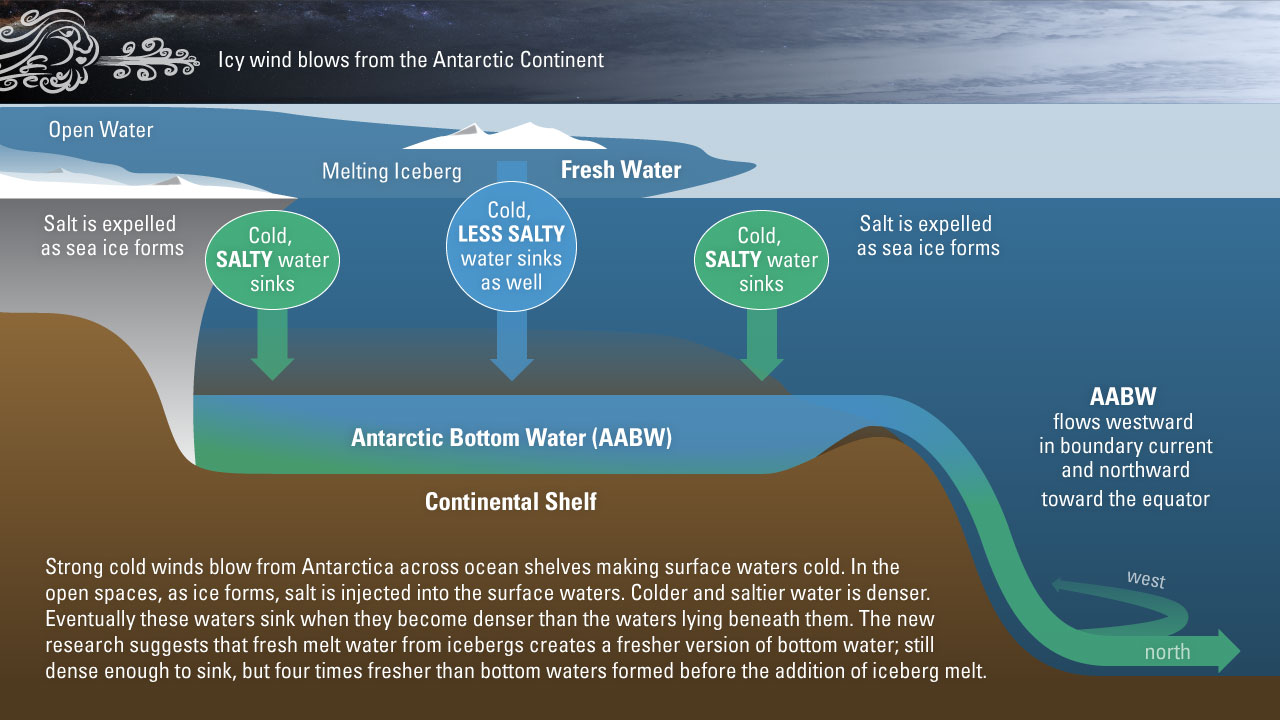[font face=Serif][font size=5]Antarctic Bottom Waters Freshening at Unexpected Rate[/font]
[font size=4]Shift could disturb ocean circulation and hasten sea level rise, researchers say[/font]

(Illustration by Eric Taylor, Woods Hole Oceanographic Institution)
January 25, 2017
[font size=3]In the cold depths along the sea floor, Antarctic Bottom Waters are part of a global circulatory system, supplying oxygen-, carbon- and nutrient-rich waters to the world’s oceans. Over the last decade, scientists have been monitoring changes in these waters. But a new study from the Woods Hole Oceanographic Institution (WHOI) suggests these changes are themselves shifting in unexpected ways, with potentially significant consequences for the ocean and climate.
In a paper published January 25 in
Science Advances, a team led by WHOI oceanographers Viviane Menezes and Alison Macdonald report that Antarctic Bottom Water (AABW) has freshened at a surprising rate between 2007 and 2016—a shift that could alter ocean circulation and ultimately contribute to rising sea levels.
“If you change the circulation, you change everything in the ocean,” said Menezes, a WHOI postdoctoral investigator and the study’s lead author. Ocean circulation drives the movement of warm and cold waters around the world, so it is essential to storing and regulating heat and plays a key role in Earth’s temperature and climate. “But we don’t have the whole story yet. We have some new pieces, but we don’t have the entire puzzle.”
…
Questions remain around the cause of the shift. Menezes and Macdonald hypothesize that the freshening could be due to a recent landscape-changing event. In 2010, an iceberg about the size of Rhode Island collided with Antarctica’s Mertz Glacier Tongue, carving out a more-than-1,000-square-mile piece and reshaping the icescape of the George V/Adelie Land Coast, where the AABW observed in this study is thought to form. The subsequent melting dramatically freshened the waters there, which may have in turn freshened the AABW as well. Future studies could use chemical analysis to trace the waters back to the site of the collision and calving and confirm the hypothesis.
…[/font][/font]
